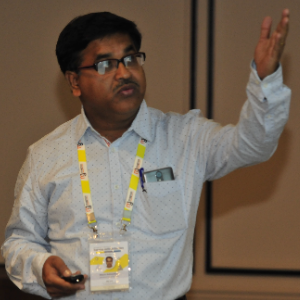Title : Alzheimer’s disease and diabetes in context: Common surface receptors, adaptors and degenerative signals
Abstract:
Alzheimer’s Disease (AD) and Type 2 Diabetes (T2D), two serious health problems with vastly different symptoms, share a complex and linked mechanism. The majority of the data suggests that diabetics, specifically T2D subjects, are at much higher risk of developing AD than normal subjects. We hypothesized that Receptor Tyrosine Kinases (RTKs) play important roles in establishing the linkage between these two diseases at the level of signal dissemination. Humans have 58 known RTKs having a similar molecular architecture with the evolutionarily conserved mechanism of activations and key components of the intracellular signalling pathways that they trigger. Results of the RTK array assay for both the disease conditions showed that two apparently unrelated proteins ALK and Ryk respond similarly upon exposure to pathological signals. Much is not known about the roles of these two RTKs in AD or T2D but at the downstream of both the signalling cascades, Grb2 emerged as a potential common adapter when either or both of ALK and Ryk received pathological signals akin to either T2D or AD and it was shown to take part in the restoration of homeostasis. Monitoring several cytoskeletal proteins at protein and transcript levels we could show that in degenerative conditions the integrity of the cytoskeleton network was largely compromised. Grb2 is naturally overexpressed in AD or T2D model systems, probably as a causality to reinforce cellular survival. While estimating the contributions of other concurrent effects owing to Grb2 overexpression affecting cytoskeletal integrity it was noted that an aggravated Grb2-NOX4 interaction might be instrumental. Overexpression of Grb2 in both the scenarios and the ubiquitous role played by it probably help retract cytoskeletal degradation by interfering with the signalling at different levels. It is premature to apprehend anything about the retroactive failure of the process, though.
Audience Take Away:
• The talk will pedagogically explain the relation between two apparently unrelated disease viz. Alzhiemer’s Disease and Diabetes
• It would help clinicians to correlate cases of Diabetics developing Alzheimer’s Disease
• This new concept and the evidence presented would definitely help teachers to design training in the fields of complex disorders.




